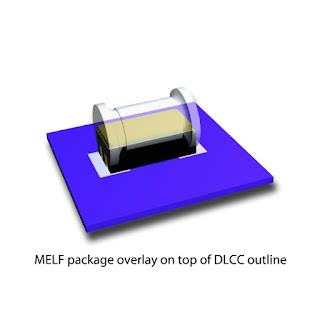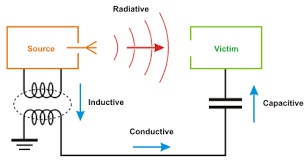Common of Surface Mount Devices (SMDs)
The
taxonomy of surface mount devices (SMDs) is so expansive and ever-changing that
covering it in full would be impossible. But here are several types that are
very common and very important to know.
MELF
(Metal Electrode Face Bonded): Consisting of two
terminals bonded to a cylindrical body, these SMD components are less expensive
than flat chips but require special handing during assembly. Furthermore, one
of their biggest disadvantages is their tendency to roll off solder pads during
assembly. Generally speaking, they come in the form of diodes, resistors, and
capacitors.
SOT
Transistors and Diodes: These are usually rectangular and easy to
place, though they're a bit outdated. The most common SOTs are SOT 23, SOT
89, SOT 143, and SOT 223. Its most common packaging is tape & reel.
Integrated
Circuits (ICs):
Small
outline Integrated Circuit (SOIC) – These are good
SMT alternatives to the duel in-line package (DIP), due to their
dramatically reduced size. In general, they take up 30 – 50% less space and 70%
less thickness than an average DIP.
Thin
Small Outline Package (TSOP) – TSOPs are low
profile packages with fine-pitch leads. TSOPs are typically meant to
accommodate large silicon chips in high density packages (RAM or flash memory
ICs), largely because of their low volume/high pin count.
Quad
Flat Pack (QFN) – QFNs are high lead count packages (44 – 304). Its leads
are typically gull wing. There are many kinds of QFNs, and they are one of the
most common surface-mount ICs.
Plastic
Leaded Chip Carrier (PLCC) - Connections are made on all four edges
of a square package with a relatively high pin count. PLCCs can have roughly 18
– 100 leads (usually J-leads). Many of them can fit into IC sockets and can be
easily replaced in the field. PLCCs have long been a popular option.
Lead-less
Chip Carrier (LCC) – Not to be confused with PLCC, LCCs have no leads.
Rather, LCCs are soldered directly onto PCBs by their (castellation) solder
pads. These are usually designed for Mil Spec because, with no leads to damage,
they're quite "rugged." LCCs are great for high temperature and
aerospace applications.
Pin
Grid Array (PGA) – PGAs are typically square or rectangular, with pins
arranged underneath the package. They're design was highly influential on the
now ubiquitous BGA.
Flip
Chip – Flip chips are bare die packages, with small bottom-side
solder bumps that act as leads. They are soldered directly onto the PCB.
Ball
Grid Array (BGA) – BGAs are perhaps one of the best performing SMT packages
in use today, due to their high densities. The BGA is a descendent of the PGA,
yet instead of pins, it has solder balls that can be placed directly onto the
PCB. Because of their high density, BGAs are typically used to house microprocessors.
Advantages: SMT
allows for smaller PCB size, higher component density, and more real estate to
work with. Because fewer drilling holes are required, SMT allows for lower cost
and faster production time. During assembly, SMT components can be placed at
rates of thousands—even tens of thousands—of placements per hour, versus less
than a thousand for THM. Solder joint formation is much more reliable and
repeatable using programmed reflow ovens versus through techniques. SMT has
proven to be more stable and better performing in shake and vibration
conditions.
Disadvantages: SMT can
be unreliable when used as the sole attachment method for components subject to
mechanical stress (i.e. external devices that are frequently attached or
detached).
Overall,
surface mounting will almost always prove more efficient and cost-effective
than through-hole mounting. It is used in more than 90 percent of PCBAs today.
However, special mechanical, electrical, and thermal considerations will
continue to require THM, keeping it relevant well into the future.
Thanks for Reading my Article...












Comments
Post a Comment